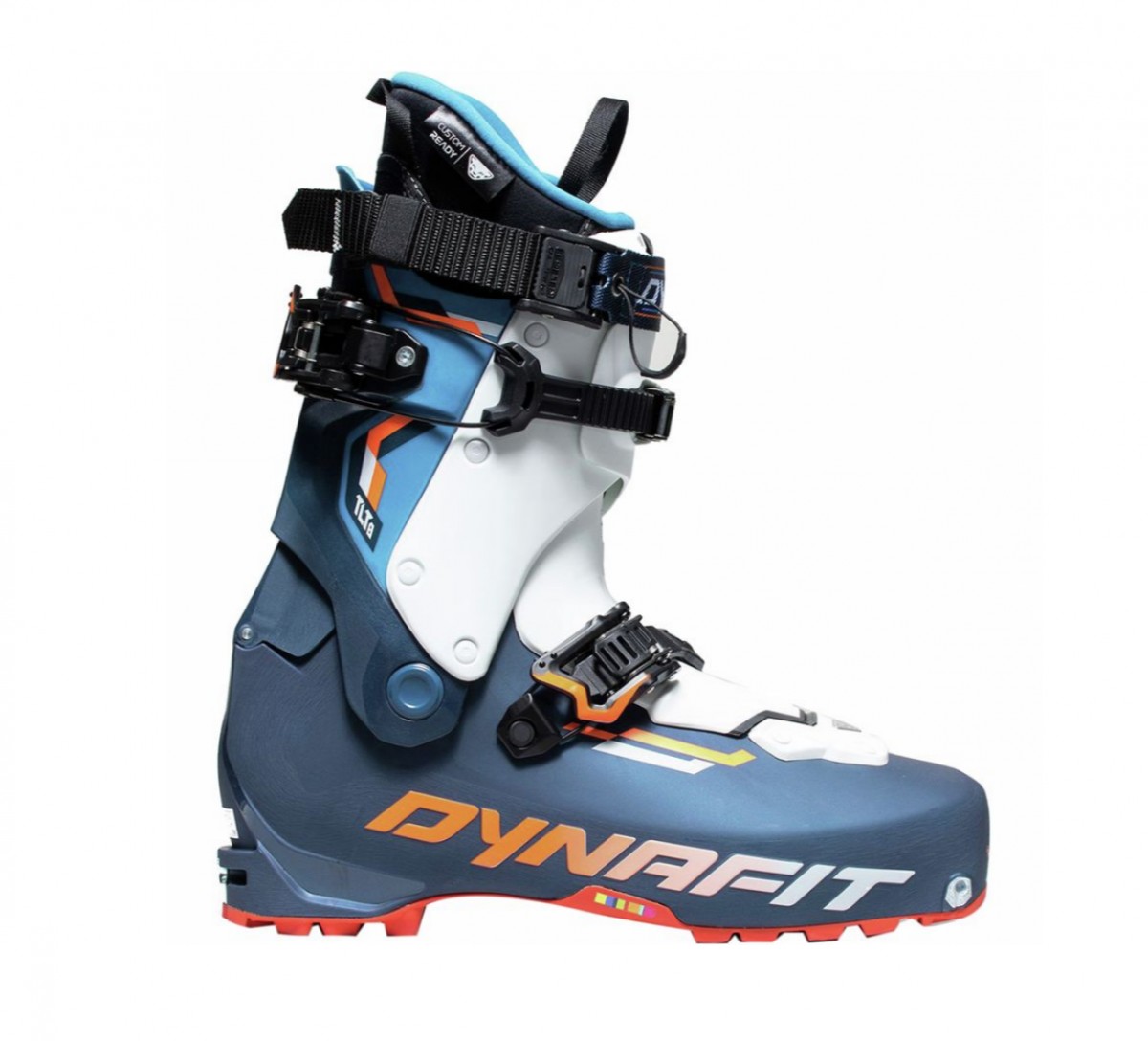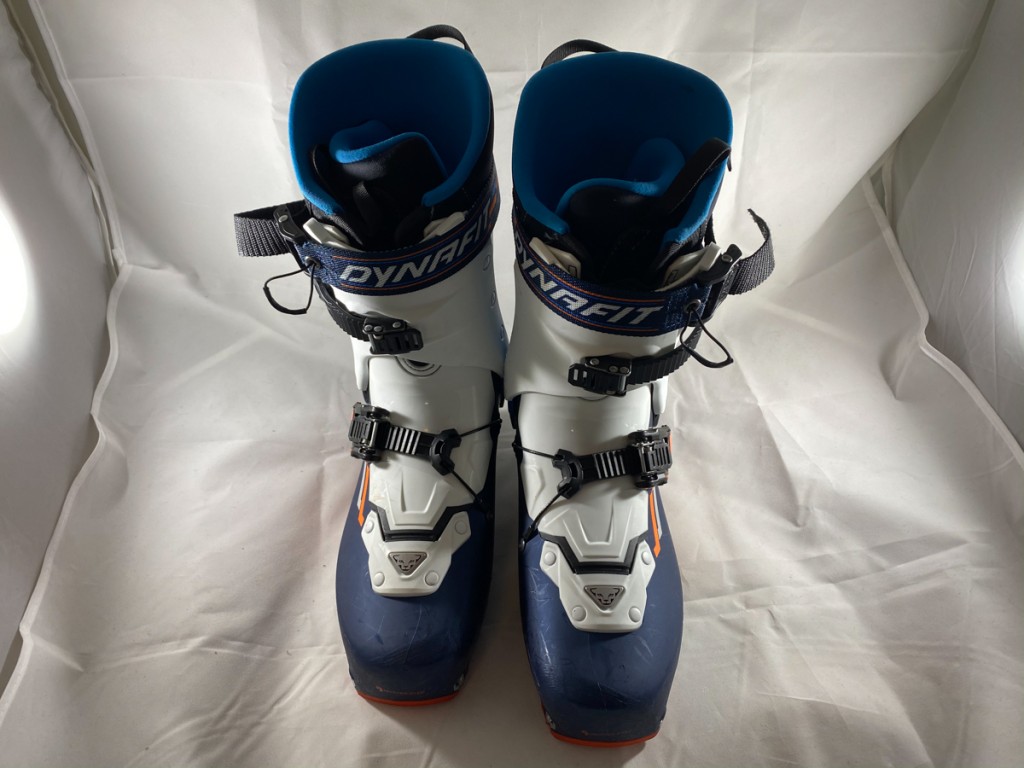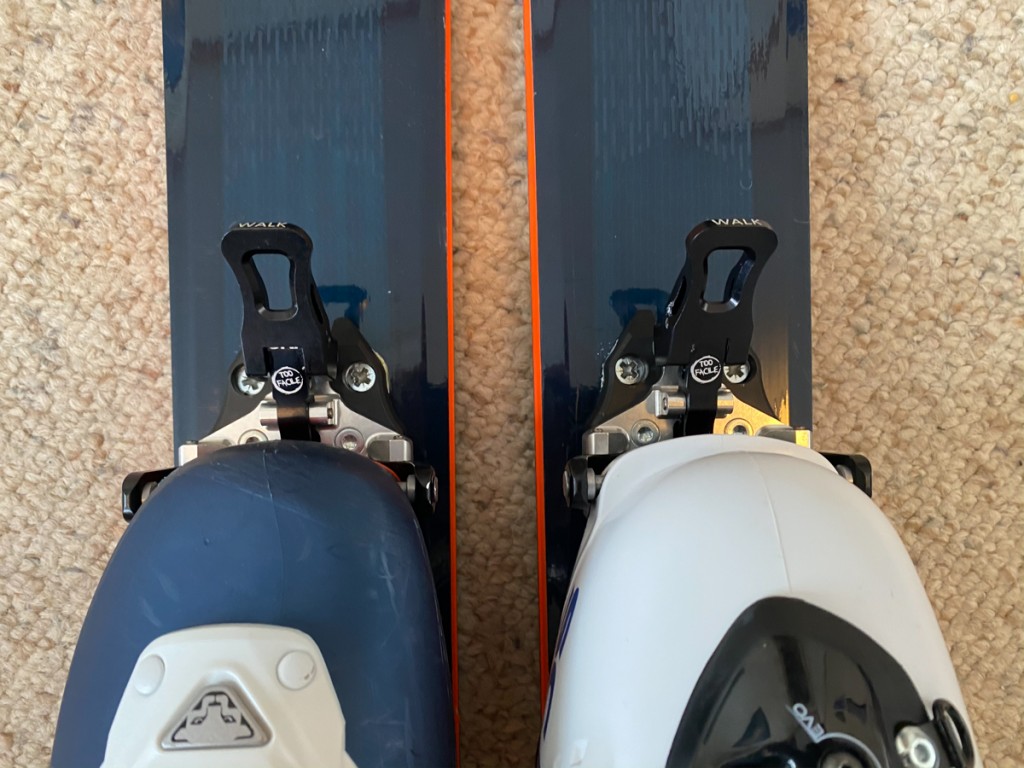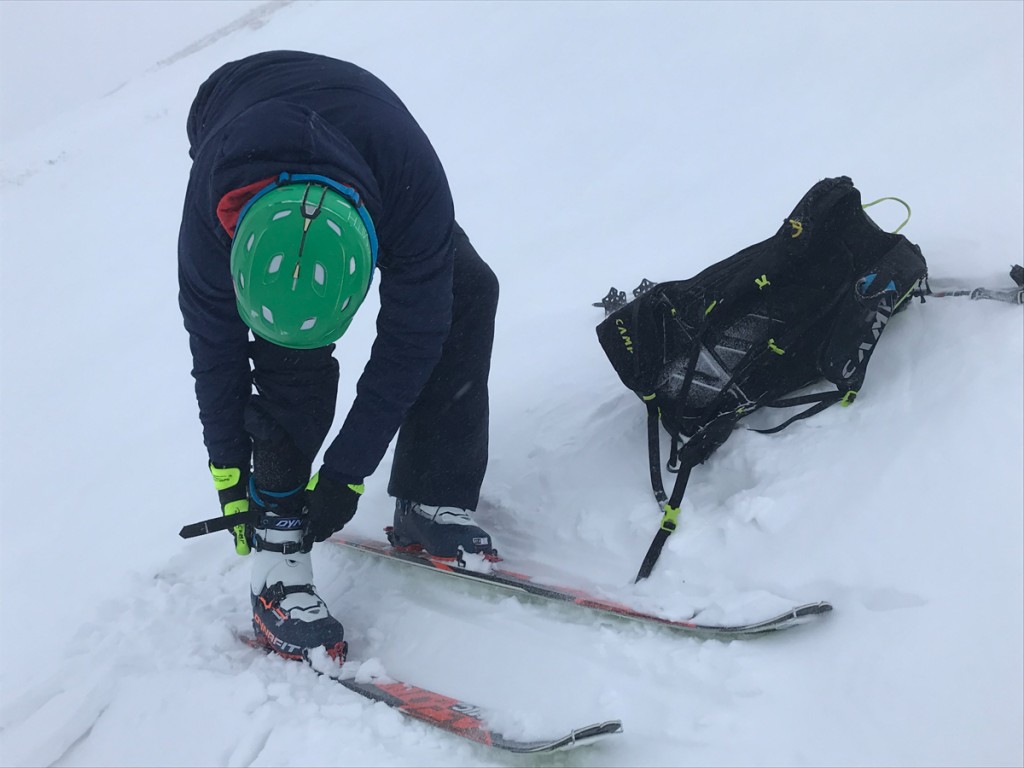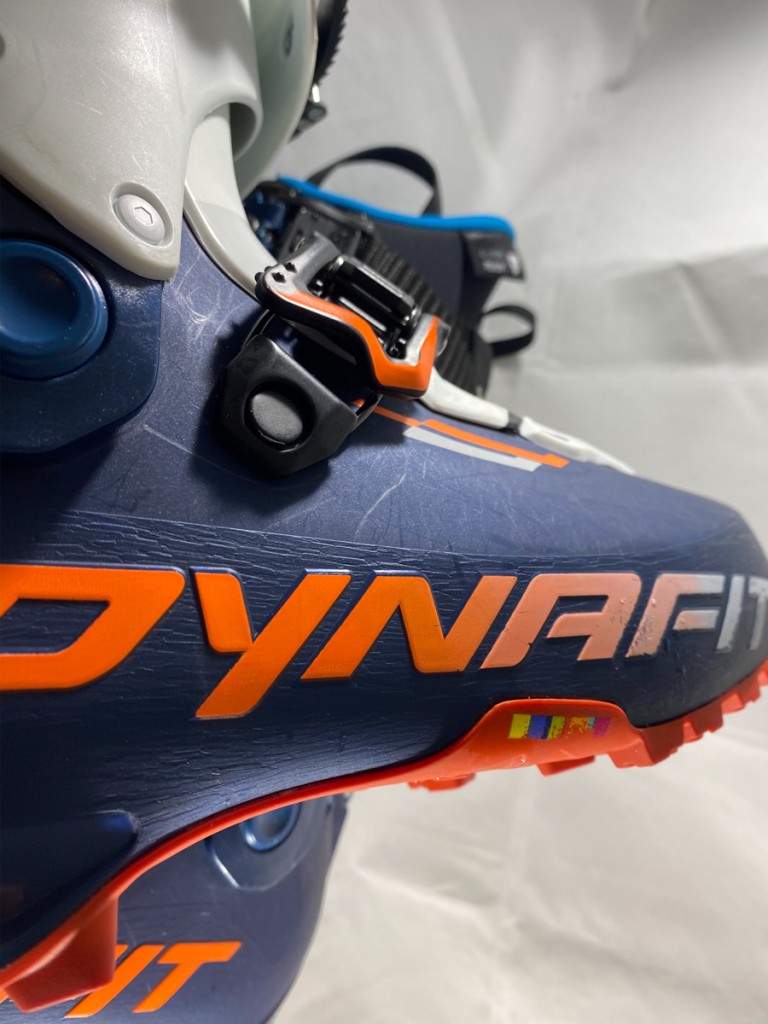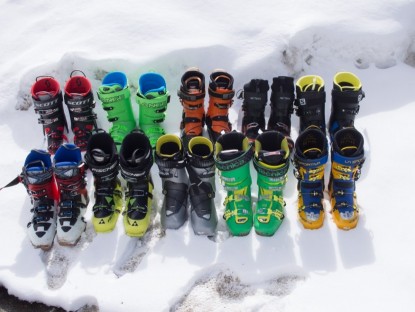Dynafit TLT 8 Expedition Review
Our Verdict
Our Analysis and Test Results
Buzz and attention, in terms of marketing, has shifted to both ends of the touring boot spectrum. The Dynafit TLT 8 sits squarely, now, in the middle of the touring boot range. As such, it sort of escapes attention in terms of PR. The fact is that most people should be in a boot like this one. They tour uphill like a dream. With just the most rudimentary of technique adjustment, you can ski downhill, similar to how you would with beefier equipment.
The boots are lightweight but robust enough for multiple seasons of enthusiastic use. Our primary warning with the TLT 8 is in terms of fit. This is a very high-volume boot. The shell and liner combination may be the highest volume ski boot we have ever tested. You can fill some of that space with a different liner and with different fit accouterments. Such adjustments are good for minor issues but won't make these boots work for narrow to average volume feet.
Performance Comparison
Uphill Performance
Ten years ago now, Dynafit set the uphill touring boot bar with the TLT 5. The 5 was a huge leap from the 4 and a huge leap from anything else on the market (aside from skimo race boots). Touring efficiency in the TLT series since then hasn't changed a ton, but it doesn't really need to. The Dynafit TLT 8 tours as good as anything else in its weight class. The cuff moves through more range of motion than your ankles can, and the friction within that range is inhibited only by normal cuff/lower interaction and the flexion of the liner.
The “Speed Nose” is Dynafit's attempt to even further refine uphill performance by moving the pivot point closer to your toes. In testing a couple of years of Dynafit models with the Speed Nose, none of our testers have noticed a major difference in touring ergonomics.
Weight
The size 26.5 TLT 8 Expedition that we tested weighs 1205 grams per foot. You can lighten that up by removing the power strap and substituting an aftermarket liner. Further, there are other versions of the TLT 8 that are even lighter. At about five and a quarter pounds for a pair, the TLT 8 is pretty dang efficient and a good value. You can spend more and get lighter boots that perform similarly, but you won't find a lighter boot in this price range that performs as well.
Downhill Performance
Touring boots don't ski exactly like your resort boots; there is no way around that fact. There is a nearly perfect inverse relationship between uphill and downhill performance. For touring boots, the TLT 8 is great for skiing downhill. We found we could drive skis of every size at almost any speed. Maximum energy input will overwhelm the stiffness (in all directions) of the TLT 8, but careful attention to the limits will be rewarded with dynamic and exciting downhill performance. You can add or subtract the power strap to your taste. Unlike previous versions of the TLT line of boots, there is no removable boot tongue to remember and pack and fiddle with. In short, these are average touring boots for typical to slightly high-speed downhill backcountry skiing.
Comfort and Fit
The overwhelming fit attribute of the TLT 8 is that it is very high volume. Our average-footed primary test editor found himself virtually swimming around in them. This poor fit essentially ruined a 10000-foot day of perfect powder touring. Remember, fit matters a lot in touring boots. Well, fit, you won't notice them up or down. Poor fitting boots can, like we noted early in testing the TLT 8, ruin your experience. Another tester used his own liners in the TLT 8 and found them to work much better. The stock liners in the TLT 8 are thin. Thicker liners can temporarily take up some space, but we don't recommend this strategy for your own boots; choose these boots only if you know you have high volume or wide feet. The good news is that few ski boots on the market are so wide and ready for this kind of user. The TLT8 stands out from the masses for its fit characteristics.
The TLT 8 liner tongue is configured such that it can twist around in touring mode and make for uncomfortable pressure points in downhill mode. This is easily remedied but is another step in transitions from uphill to downhill.
Warmth
The generous fit allows easy circulation, but the thin liner and moderate thickness shell materials compromise insulation. The end result is that the TLT 8 Expedition is about average in warmth. Many don't think of the warmth of their AT ski boots, but we think they should. Backcountry skiing takes place in a cold environment. If something bad happens, you could be inactive for hours with only your ski boots to protect your feet. Choose your materials and fit wisely.
Ease of Use
Dynafit's TLT series of boots has swung all over the place in terms of ease of use. With the TLT 5 and 6, the buckles were easy and clean, but the removable tongue was a pain to keep track of. The TLT 7 eliminated the removable tongue without losing uphill or downhill performance but added a cable-actuated lower buckle that was unnecessarily complicated. The TLT 8 eliminates the cable and keeps the simplicity of no removable tongue. The buckles are sturdy and stay out of the way while touring. The latest iteration of the upper cuff buckle is configured such that some transitions can be made with your pants cuffs down with no worry of a layer of pant material getting between buckle and shell. The power strap is cleverly configured to loosen up with one hand.
We have two complaints. One came from one tester who noted that the lowest buckle sits real close to the boot. When cranked down tight, his gloved fingers couldn't get behind the buckle to open it up. Further, we don't really like the Dynafit “Speed Nose”. This configuration limits binding compatibility (one tester joked that the “Speed Nose” is an Austrian middle finger to splitboarders. Hard boot splitboarders like to repurpose lightweight ski boots for use in their “plate” bindings; TLT 5 and 6 boots were popular among splitboarders. This snowboard strategy requires a toe welt that the TLT 8 doesn't have) and crampon compatibility with limited to unnoticeable walking and touring efficiency gains.
Value
They aren't expensive, and they aren't cheap. The design is one that will hold up to years of use, and the performance is well-rounded and can easily serve as your only ski touring boots. A concern, in terms of value, is the Speed Nose. You'll need to make sure bindings and crampons are all compatible with these boots.
Conclusion
Dynafit innovates and refines in almost equal measures. The TLT 8 is a refinement, combining some of the best innovations to their all-around lightweight touring boots of the last ten years. They also make some questionable choices with the super high volume fit and the welt-less toe. When it all works with your system and feet, the TLT 8 is great. If it doesn't work, there is very little you can do to adjust.


